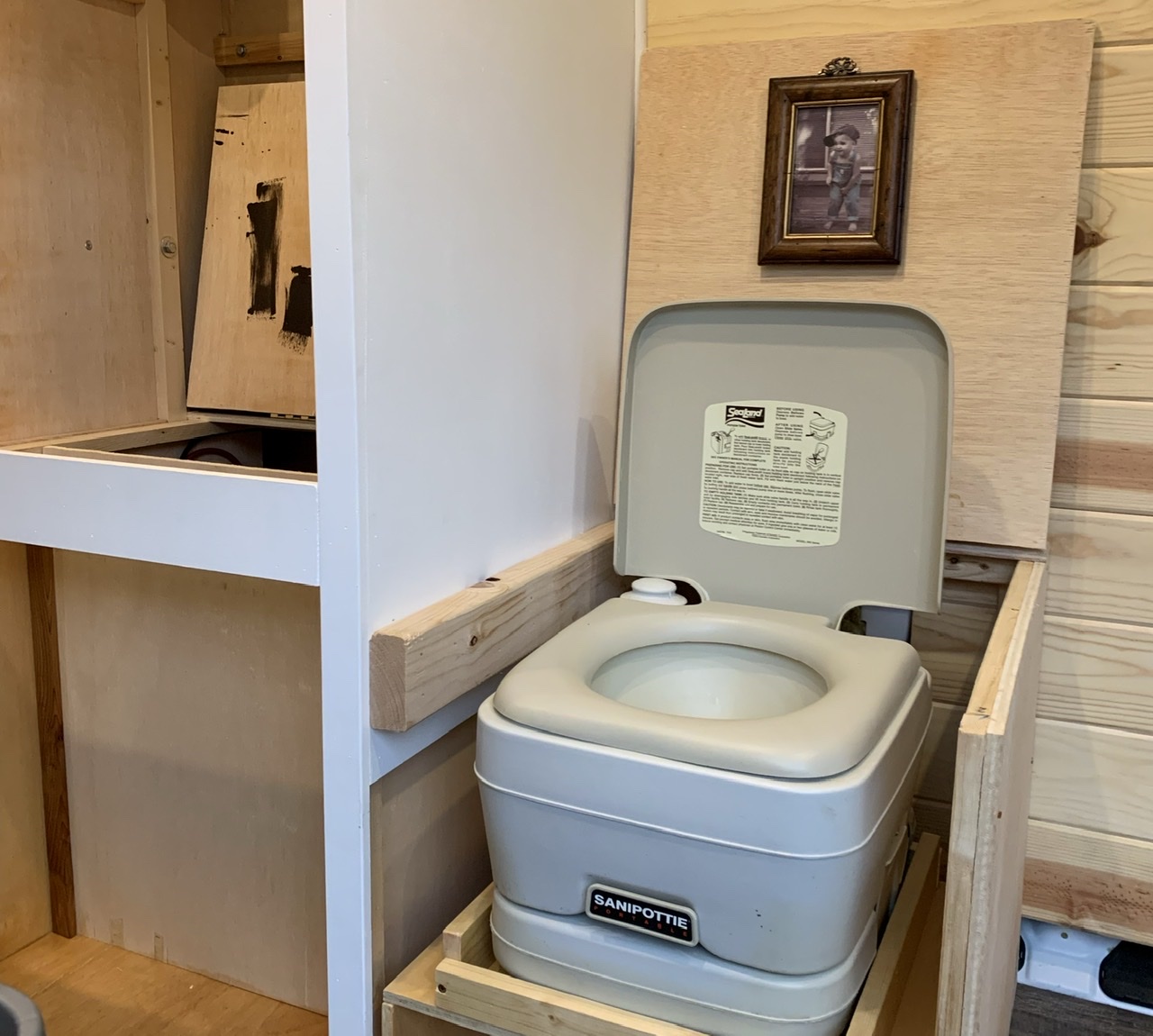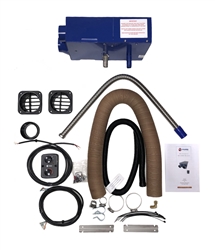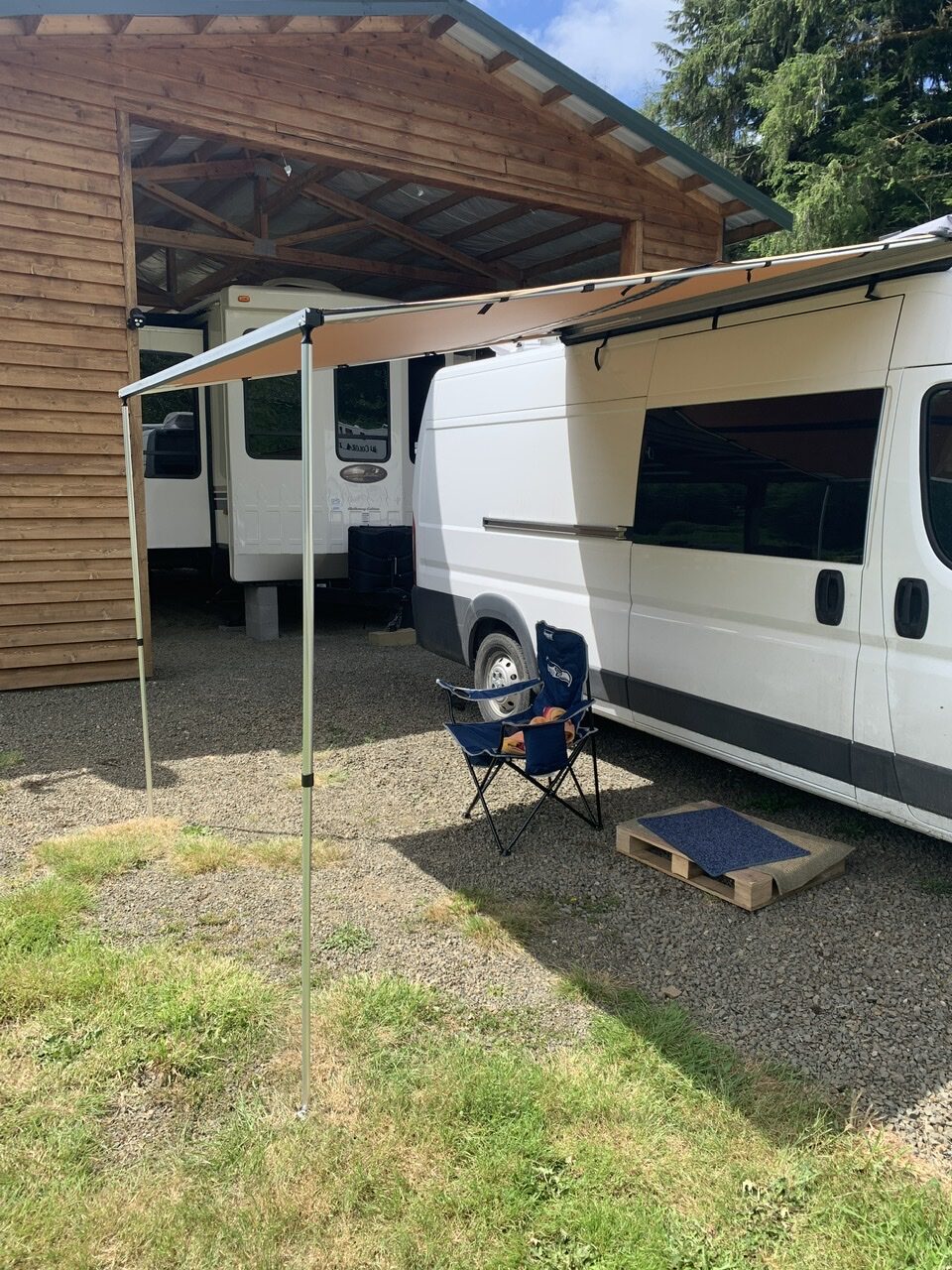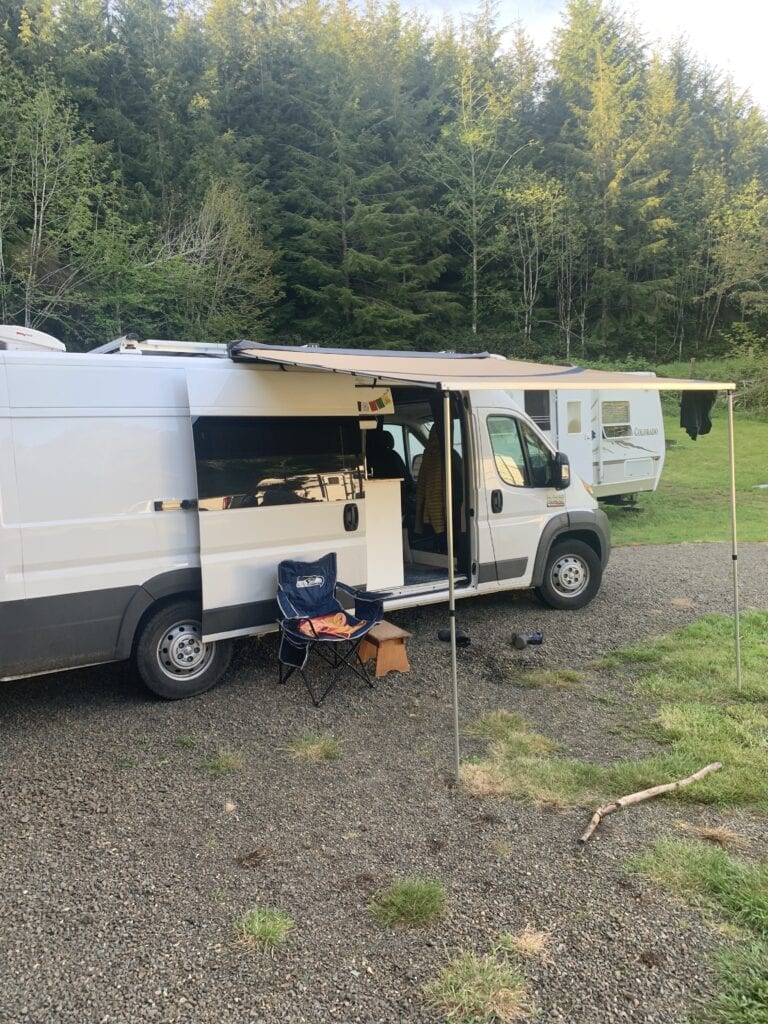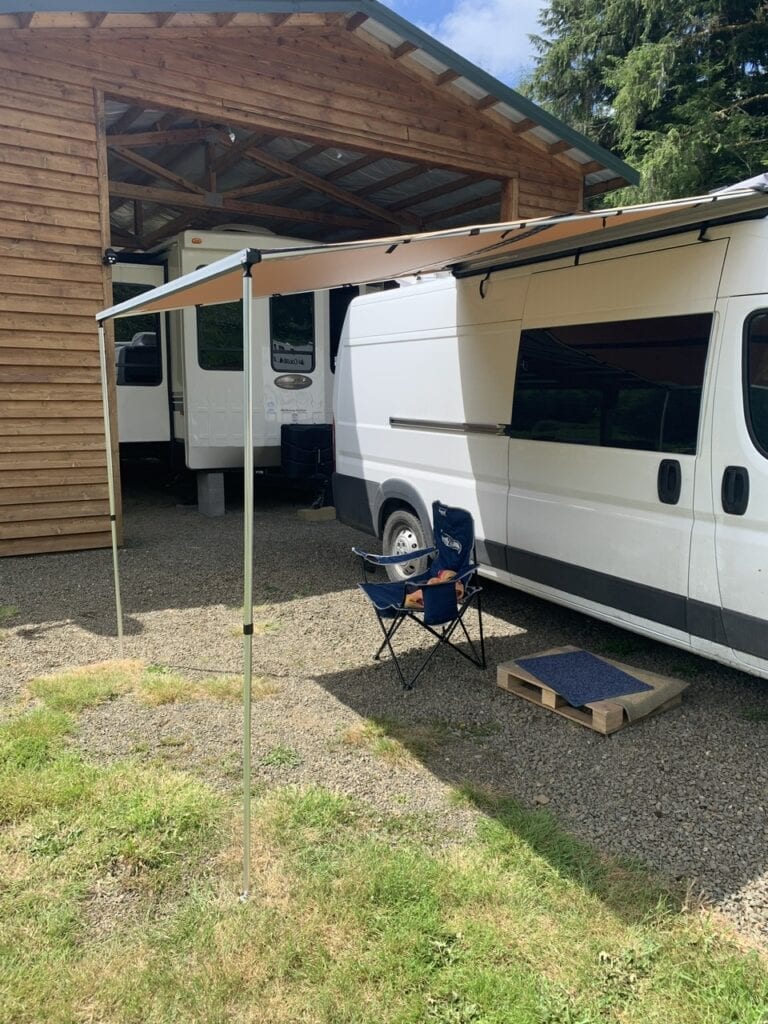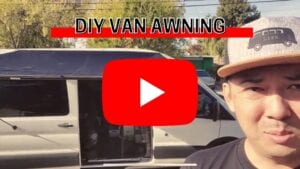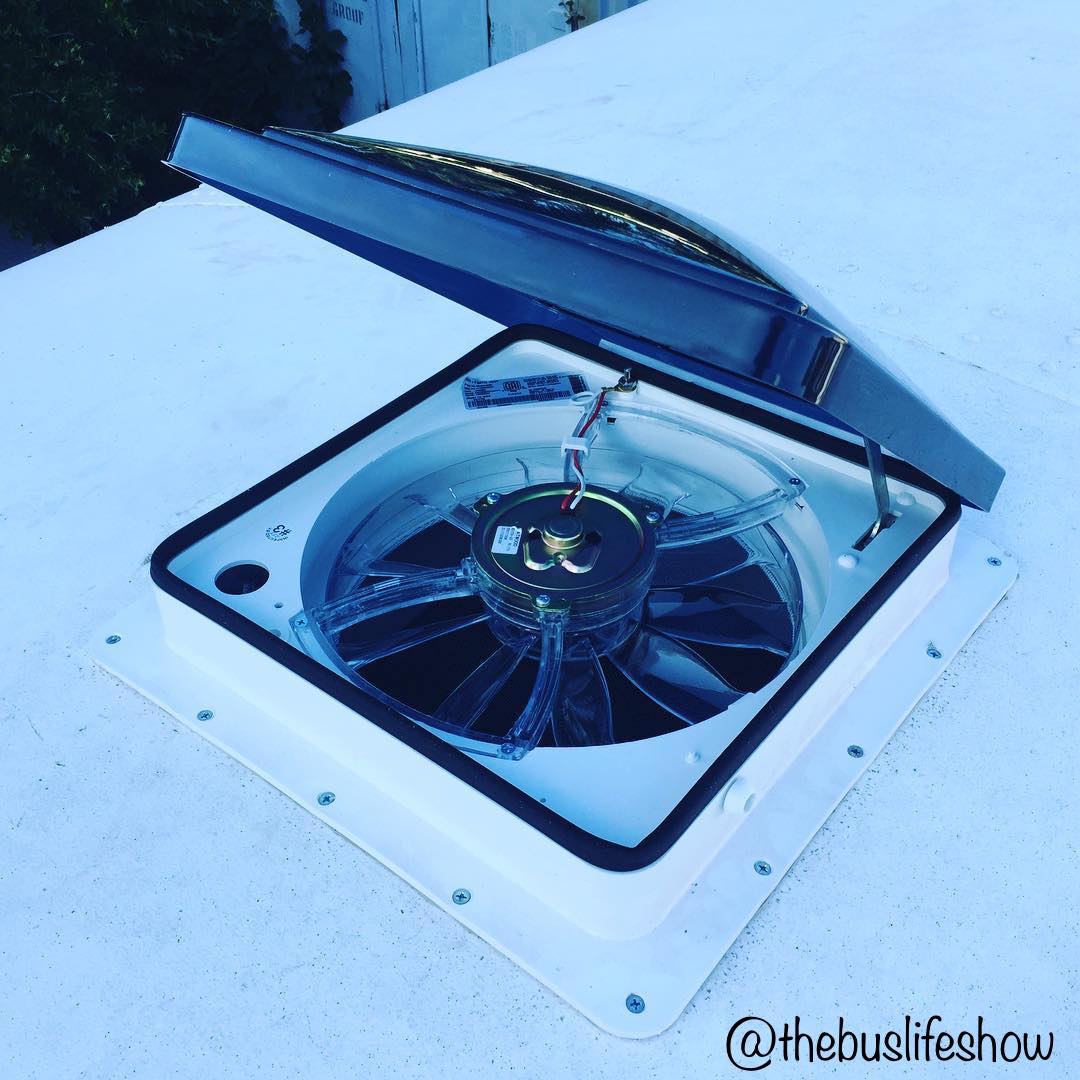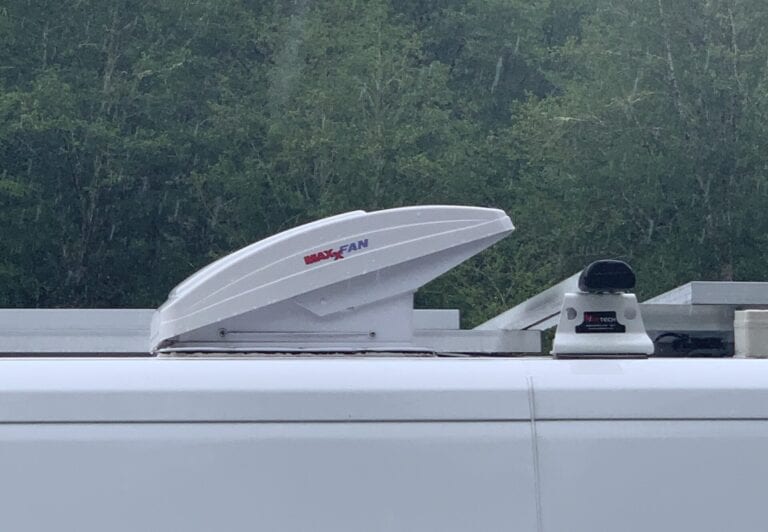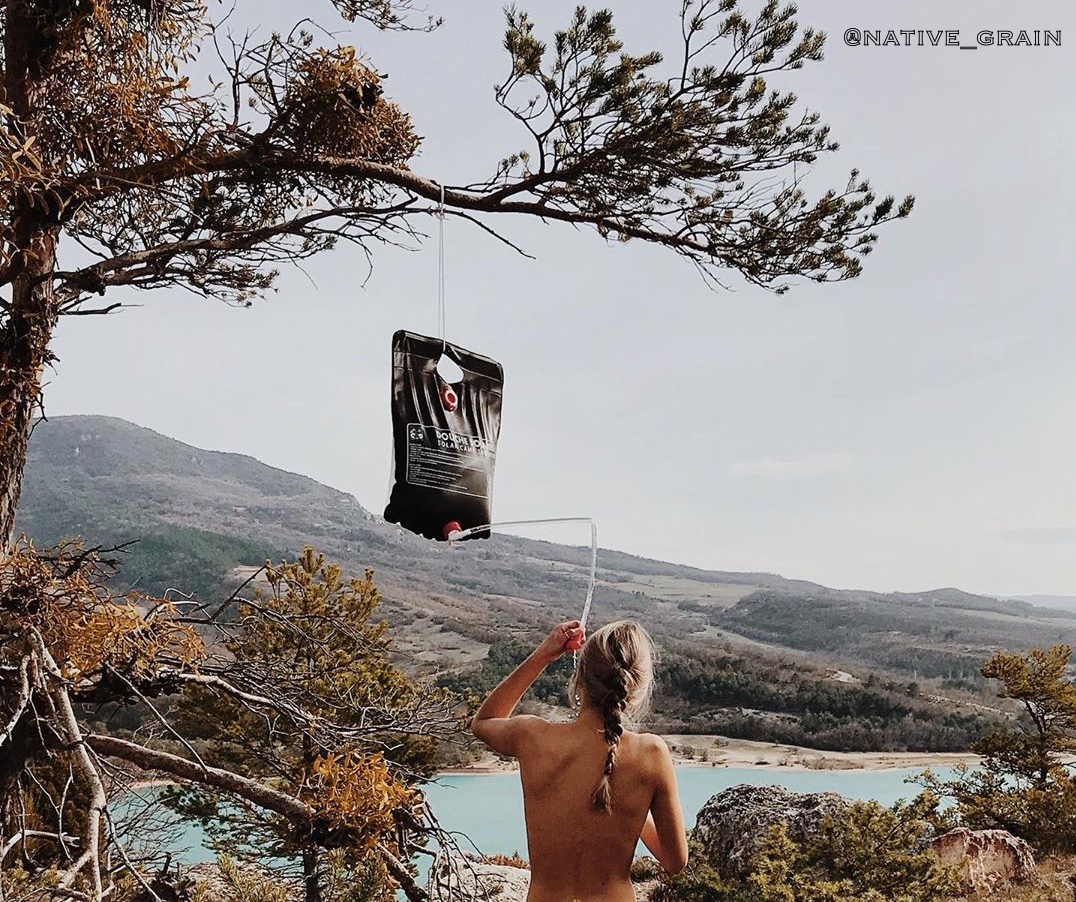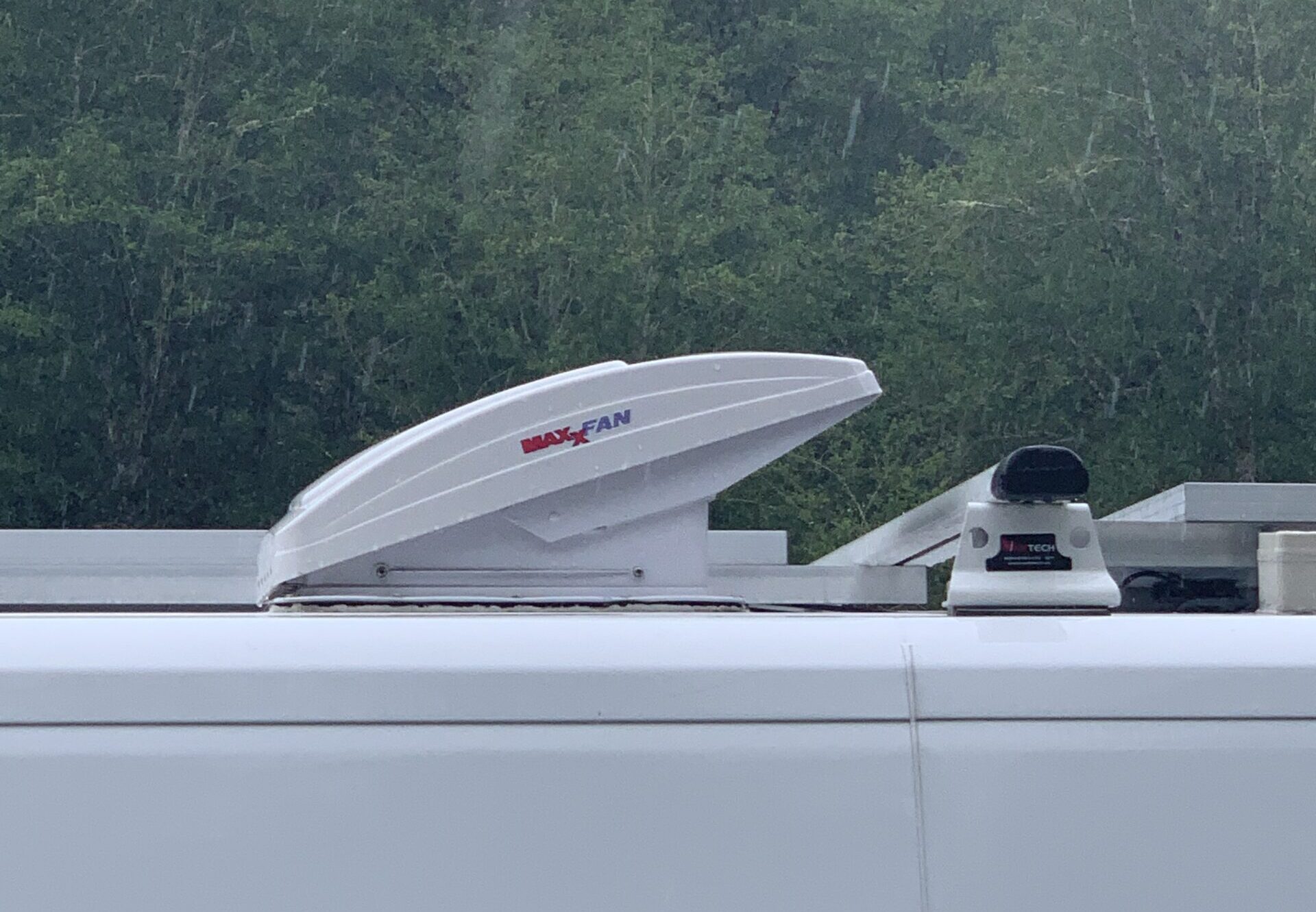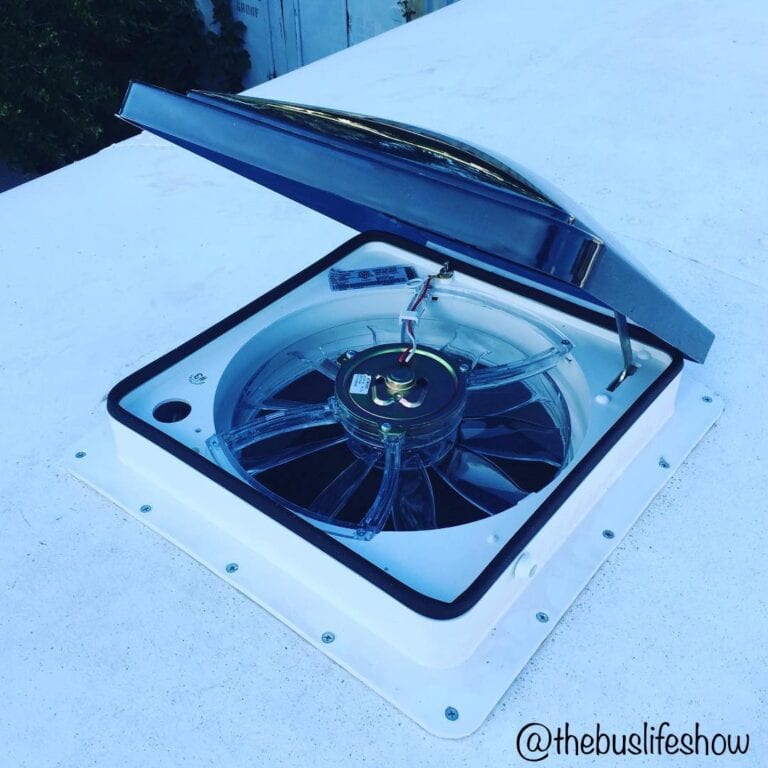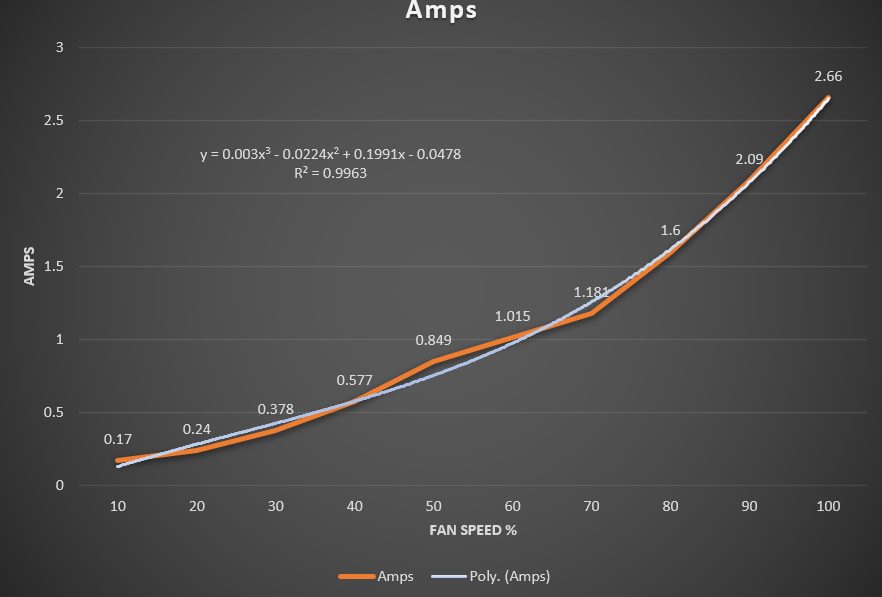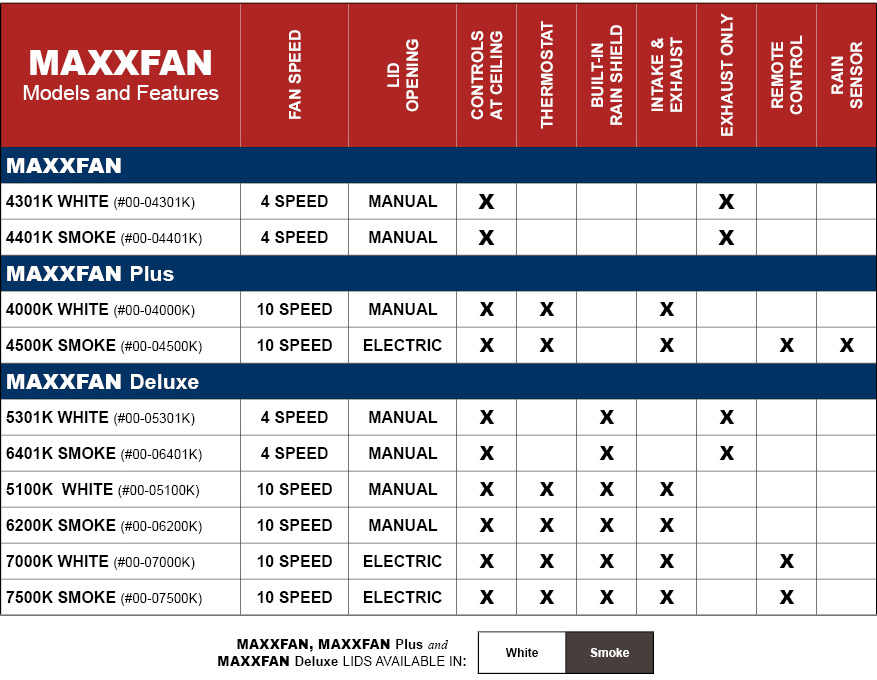Making coffee while camping or on the road can be as easy as making coffee at home. Whether you are in an RV, van, trailer, car camping or in a tent, all you need is the right tools to brew the perfect cup of camping coffee, every time.
For me, no matter where I wake up, morning coffee is a ritual and the best part of the day. The van fills up with steam first as the water slowly comes to a bubbling boil, the shrill whistle of the kettle pierces the silence and that rich coffee aroma hanging in the air is one of the best smells around.
We’ll try and cover every possible way to make coffee while camping, as well as other important coffee information. If you feel like we missed anything, please let us know in the comments.
How to Start
The Coffee Beans
No matter where you are, to make the best cup of coffee you need to start with the best bean.
Fairtrade is essential. Sustainability is a bonus. Buy local wherever and whenever possible and once you discover your favorite bean or grind, pick up the biggest bag you can find to save on cost and packaging, much of which is unfortunately still unrecyclable.
Best Eco Friendly Coffee
Larry's Coffee (Organic, Fairtrade)
Larry’s Coffee is an organic, small batch coffee company that has a long record of being eco-friendly and shade-grown (which means bird friendly), as well as emphasizing fair trade and sustainability since they were founded in 1992.
Support a Van Life Coffee Company
Divine On The Roast Coffee Co.

This coffee company was started by a van lifer, @divineontheroad. She sells, hot kits (including an aeropress), cold kits, dark roast, espresso roast, mugs, and stickers (I’m a huge sticker nerd). Check out the details here: https://shopdivineontheroad.com/
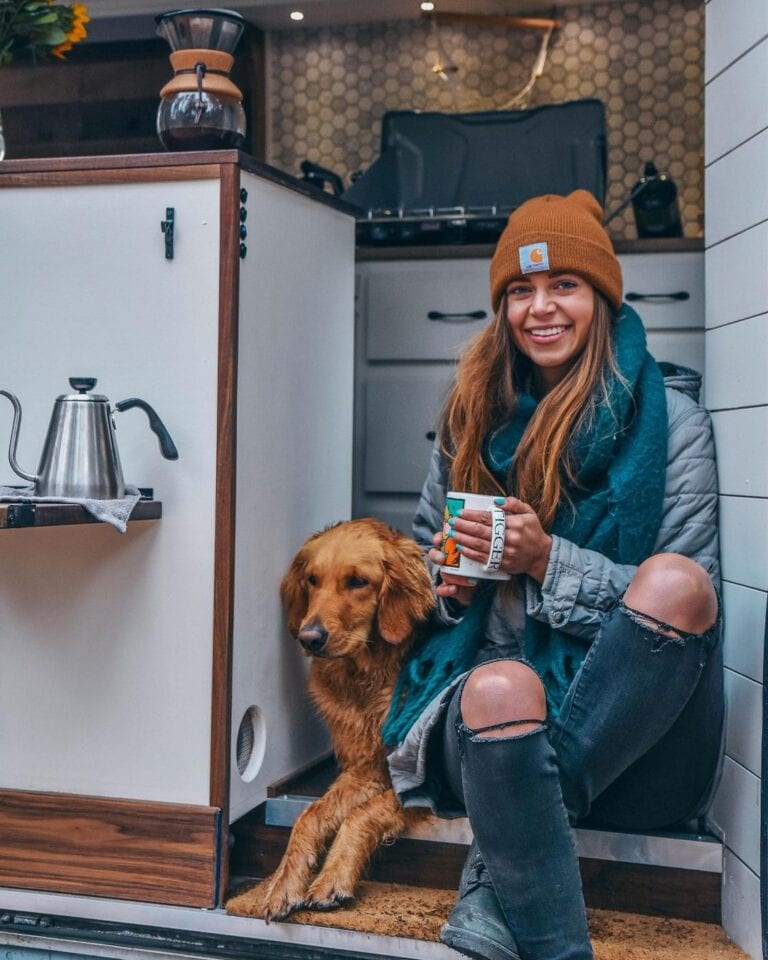
The Water
Some sushi chef’s believe that it is not the fish that makes a good sushi roll, it is the rice. Similarly, you can’t make a decent cup of camping coffee without clean, clear water.
You might choose bottled water for drinking and cooking and tank water for cleaning and washing, but all that plastic will add up quickly while camping or in a small space like a van and is completely unrealistic while doing a long backpacking trek.
Filtering water is definitely cheaper than buying it. A good water filter will allow you to collect water from streams, springs, lakes, ponds, and outdoor public taps.
Alternatively you can boil the water to sterilize it when you’re out camping or hiking, but this will do nothing for the water’s taste.
It is so useful to have a large jug around. We use ours every single day. Once we used it to put out a fire under the bonnet! Be sure to stash some extra filters in your toolbox for many months of crisp, clear water, regardless of the source, and never worry about the quality of your drinking water again!
Alright, now let’s talk about how to make coffee without the use of your typical coffee maker.
Camping Coffee Methods

If you are anything like me, your day simply won’t start without at least two cups of coffee.
Having the best setup to make your own coffee will save time and money. A little more self-sufficiency, a little less needy, a little more prepared, a little less pricey.
Camping coffee doesn’t have to be difficult. Whether it’s cowboy coffee, pour-over, French press or even a portable espresso machine (for those of you with camper vans or RV’s), there are many ways to brew your cup of camp coffee. Take charge of your morning to jump start your whole day!
How To Make Coffee Without a Coffee Maker
1) Instant Coffee
By and far the EASIEST way to make a cup of coffee while camping is instant coffee.
Instant coffee is the love of backpackers and thru-hikers alike. It’s portable, lightweight, and easy. In fact, some hikers don’t even bother heating it up.
Regardless of what you think about the taste, instant coffee is an easy way to get that caffeine fix, especially if your doing any sort of backwoods camping.
Also, did you know? Instant coffee is considered more eco-friendly than other coffee preparation methods. In fact, it is said to have 1/3 the total emissions compared to drip-coffee (source).
If that isn’t enough to get your caffeine fix a-buzzin, check out these awesome instant coffee brands for your next camping trip.
Mount Hagen Instant Coffee (Organic, Fairtrade)
Mount Hagen makes instant coffee that is organic and fairtrade made from 100% highland Arabica coffee beans.
Republica Instant Coffee (Organic, Fairtrade)
Republica is yet another certified organic and fairtrade coffee company making an instant coffee out of 100% sustainably sourced Arabica coffee beans. The female-owned company also states that “At República, ethics with impact is at the very heart of our philosophy.”
2) Pour-Over Method
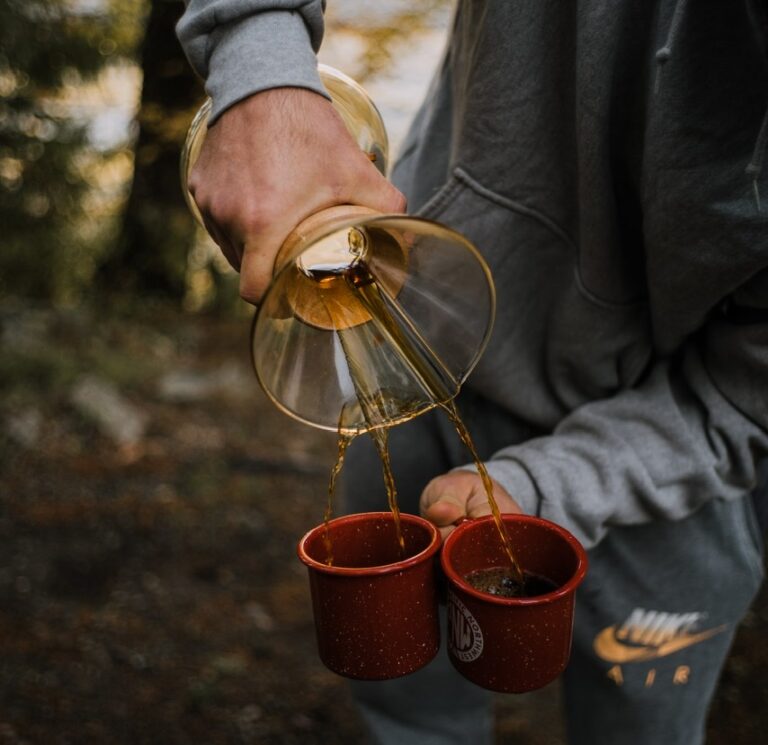
The pour-over is very simple. Boil a kettle of water and pour it over a scoop of coffee through a strainer or coffee filter. Boom. Caffeine.
The pour-over method does require a bit of practice, however. You have to time the pouring of the water to produce a good-tasting cup of coffee.
For how simple it is there is a remarkable amount of tools and gadgets for the pour-over camp coffee method.
Single Use Pour Over Pouches
They make single use pour over bags that look a bit similar to tea bags however you open the top to reveal the coffee grounds just ready and waiting to get that boiling water poured over them.
The downside? Well, trash really. If you’re hiking or backpacking you will need to haul away the coffee grounds, filter, and plastic.
Kuju Coffee Single Use Pour Over
Kuju states that they are ethically sourced and eco-friendly. Even though these pouches are single use, they state that the company runs off 100% wind-power. They also donate 1% of all sales to the National Park system.
Twin Peaks Pour Over (Single-origin, Fairtrade)
Twin peaks is a popular pour over coffee blend that boasts of being single-origin, fairtrade, and non-GMO. These guys are perfect for your next camping trip.
More Traditional Pour-Over Method
If you want a more traditional approach, however, you will be able to cut down on your waste. They make a ton of different products for this, from lightweight pour-over stands for you ultralight backpacking gear-heads, to more involved car camping sets.
The added bonus of this pour-over method is that you will also be reducing cost. Those individual packets tend to have a higher CpC (Cost per Cup, a widely used term that we literally just made up).
Ultralight Pour-Over Camping Coffee Makers
GSI Outdoors Ultralight Java Drip
If you are at all into outdoor gear, than you should be familiar with GSI. They make a range of camping and hiking equipment and this is their pour-over coffee product. Coming in at less than 0.5 ounce (14 grams), this is definitely a lightweight option.
Snow Peak’s Collapsible Coffee Drip
Although this probably wouldn’t fall into the “ultralight” gear category, this thing is still pretty nifty. It comes in at 4.9 ounces (140 grams) but it’s foldability gives it a good place in our camping coffee pour-over list.
Primula Brew Buddy Portable Pour Over
This is another lightweight (and cheap) option for a pour over camping coffee maker. The Primula brew buddy comes in at 0.96 ounces (27 grams).
Bigger (Better?) Pour-Over Coffee Makers Perfect For Car Camping
GSI Outdoors JavaDrip Coffee Maker
Okay, this thing is pretty cool. It’s an all-in-one pour-over coffee maker perfect for your next camping trip. The pour-over filter sits snuggly in the cup and it all stores away easily. The cup itself has a handle and lid for your convenience.
OXO Brew Single Serve Dripper Pour Over Coffee Maker
OXO is a popular brand when it comes to kitchen supplies. Even though this coffee maker isn’t specifically designed for camping, it would still work great for any car camping, RV, or camper van outings.
Wacaco Pipamoka Portable Coffee Maker
This is an all-in-one pour over coffee maker that comes with a separate container for holding beans. Just put the coffee in the filter, pour in hot water directly into the filter that drains into the insulated thermos, and enjoy!
3) Cowboy Coffee

Cowboy coffee is just a cool sounding way to say “throw a bunch of beans into boiling water and drink.”
Really though, that’s pretty much what it is. However, for how simple it is there are a few different ways of doing it. The traditional way is to throw the coarsely ground beans into boiling water. You can either then strain the water before drinking with a coffee filter or cheesecloth (or a bandana if you’re a real cowboy).
Conversely, you can put the ground beans into the bandana or cheesecloth, wrap it up and put that into the boiling water (less of a mess). Cowboy coffee might be the easiest way to make coffee without a coffee maker.
4) Coffee Bags
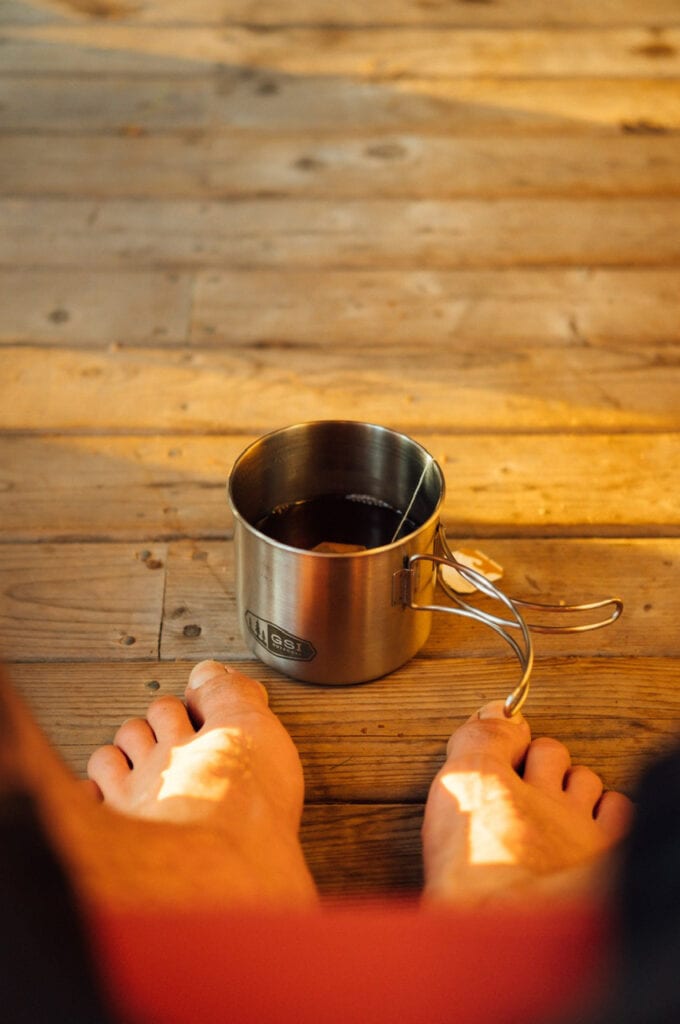
Coffee bags are a thing. Much like their counterpart, the tea bag, coffee bags are simple to use. You simply steep the bag in hot water for a few minutes and then discard the bag. Please make sure to dispose of your trash in an appropriate place. If you are hiking or backpacking, carry out all trash, including used coffee bags.
Steeped Coffee Co.
Steeped Coffee Company makes single-use small-batch coffee “tea” bags. These are perfect for camping or hiking and come in light, medium, and dark roast (as well as decaf).
Different Types of Camping Friendly Coffee Makers
5) Aeropress
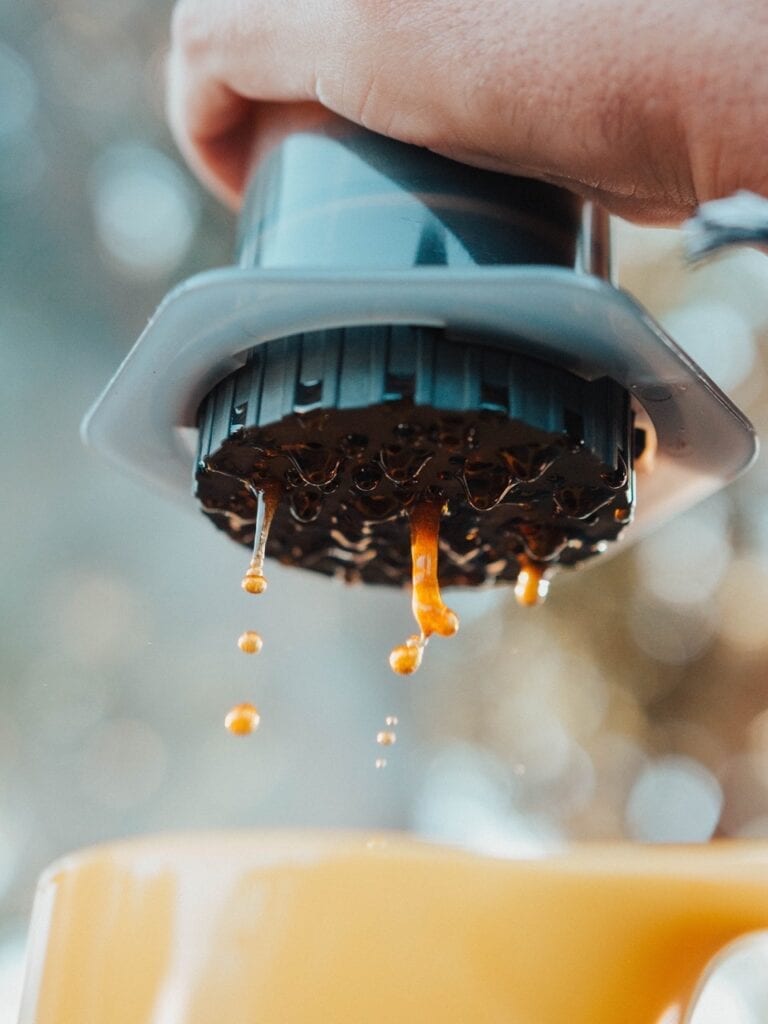
The Aeropress is HUGE in the backpacking, hiking, and camping worlds… and for obvious reasons. This thing is awesome.
It works similarly to a French press and creates a perfect cup of joe. Because of how portable it is, it is a common sight among hikers. It comes with it’s own filter holder and compresses the ground beans to a very dense puck which makes clean-up easy. As we’ve stressed many times during this article, you should carry out all of your coffee grounds if you are hiking. Leave no trace!
It is a bit different than a French press, however, because you can use coffee filters which means you can grind your coffee into a finer consistency which allows a full rich flavor without the bitterness often associated with the French Press.
Aeropress Coffee Maker
Aeropress coffee maker with single-use filters. The coffee only requires about 10 seconds of stirring before you are ready to press and drink!
6) French Press
French press coffee is an acquired taste. Some people love it, other people hate it.
French press coffee tends to have a strong taste that some people refer to as “bitter.” This is typically because of the coarse ground coffee required to use the French press. Basically, you add the coarse grounds to the device and pour in hot water. You let the water sit for a few minutes, stirring it up from time to time to mix up the grounds.
After a couple minutes you can compress the plunger and push all the grounds to the bottom. Most French presses have a pour spout and you simply pour and enjoy.
If you like the flavor of French press coffee than it is a perfect option for camping or even as a permanent coffee staple in a van, RV, or home.
Some French presses are glass. If you are wary of carrying glass camping or in your van/RV, and you should be (we have smashed our way through three of the glass ones so far– twice through stupid human error and the other time remains a van mystery, we woke to a pile of glass waiting in the sink–a sad morning indeed), a camping coffee pot made of stainless-steel works here too.
Steel is easier to clean and keep clean than glass which gets grey and smudgy quickly. The only downside we know of to a steel coffee plunger is you can’t see through it so either get yourself a coffee measuring scoop or play coffee roulette and be prepared to strap yourself in for the caffeine ride of your life.
Stanley All-in-one Adventure French Press
Stanley makes a couple different types of portable camping French Presses. This one weighs just under a pound and is an all-in-one coffee making system. It is sturdy and easy to clean (dishwasher safe). Serves 2-3 people.
Coffee Gator French Press
This French press is perfect for home, camping, or traveling in a RV or van. It comes with a separate travel canister for the beans. Serves 3-4 people.
JavaPresse Manual Coffee Grinder
WideSea makes a french press that is perfect for backpacking. It’s 12.8 ounces which is a small price to pay if you love your coffee as much as we do. Serves 1-2 people.
7) Other French Press Attachments
Some stand-alone backpacking stoves (like the JetBoil) have a French press attachment which work well if you already carry one of these stoves (or are planning on getting one). The JetBoil system and it’s competitor, MSR, are staples of the hiking world and can boil water very fast.
JetBoil Flash Java Kit System
This is the JetBoil Flash PLUS the french press attachment.
JetBoil French Press
The stand-alone attachment for the JetBoil systems.
MSR Reactor 1.7L System
The JetBoil is powerful, but this thing is insane. Great for large groups.
MSR Reactor French Press
The stand-alone attachment for the MSR Reactor systems.
8) Moka Pot or "Stove Top Espresso"
A moka pot is a stove-top coffee maker that passes pressurized boiling water through coffee grounds to brew coffee. It was originally invented by an Italian guy buy the name of Alfonso Bialetti back in the 1930’s.
Mobile coffee prep gets an upgrade with a stove top espresso maker. Add water to the bottom, coffee grinds to the top and heat over gas flame. This device is cool, funky looking and makes a mean cup of coffee.
Moka pots are perfect camp-friendly coffee makers because they don’t require electricity and can be used on any camp-stove.
You will want a medium to medium-fine grind for a moka pot. More coarse than espresso but finer than drip coffee. Moka pot coffee is also about 2-3 times stronger than drip coffee and about half the strength of espresso, so keep that in mind!
Primula Aluminum Espresso Moka Pot
There isn’t anything too fancy about a moka pot. You basically unscrew the top, place coffee into the filter tube, add water and boil for 2-3 minutes. Serve!
9) Percolator
Percolators are another great stove-top camping solution for coffee. You add the coffee grounds to the top chamber and the water to the bottom chamber and place on the stove. Once the water begins to heat up it travels up the center “tube” and then drips over the coffee grounds.
The brewed coffee goes right back into the lower chamber, where the cycle repeats. Therefor the coffee gets stronger as time goes on. Five-or-so minutes seems to be a perfect amount of time but it will continue brewing indefinitely.
This is an easy choice for camp coffee but it can also be easy to forget, causing it to be over brewed and turn bitter.
GSI Outdoors 12 Cup Percolator
Here is GSI again, making another great camping coffee maker. This percolator holds up to 12 cups, making it perfect for multiple people.
Portable Coffee Makers and Espresso Makers
10) Portable Espresso Maker
For truly fresh camping coffee on the go, check out these cool portable espresso machines. These machines are compact, portable and perfect for car camping or hiking.
Conquenco Coffee Maker (Espresso)
If you’re an espresso nut than this is for you. Portable, easy to use, and rechargable via USB or car cigarette-lighter adaptor. This one takes about 8-15 minutes and is recharchable via USB.
Wacaco Nanopresso Espresso Maker
This little guy is portable and doesn’t even require electricity or batteries. It is completely manual. You can buy an adaptor so it excepts pods but it is not necessary and will work with any espresso ground coffee beans.
11) Dometic PerfectCoffee MC 01 (12v or 24v)
For a super light and portable single cup coffee machine which plugs into your cigarette lighter, check out the Dometic PerfectCoffee travel device. At 0.6kg in weight and only 11 x 13 cm this unit wont take up much space but will brew you up a perfect cup in 10 minutes.
Simply pour the coffee into the permanent filter, fill the water reservoir and wait. Plenty of time to assemble some breakfast. They make this coffee maker in both 12v and 24v versions.
The downside? You have to find an authorized dealer. Check out their website to learn more.
There are many different kinds of portable coffee makers out on the market, and we won’t go into them all. However, if you want to find out more information check out this great YouTube video by OutdoorZone:
Other Coffee Supplies
Manual Coffee Grinders
When it comes to coffee, whole beans are best for a smoother, fresher taste. Manually grinding your beans with one of these cool retro gadgets is not hard work, it is definitely instagram-worthy and adds a little elbow grease to the whole morning ritual. Choose one that stores any extra grinds in the base, ready for the next cup.
JavaPresse Manual Coffee Grinder
This guy pairs well with your camping coffee kit. It has adjustable settings, is easy to clean and take apart, and is very durable.
SoulHand - All in One Coffee Grinder / Coffee Maker
If you want an all-in-one system, look no further than this guy. It has a grinder, reusable coffee drip filter, portable thermos, bean storage compartment and it’s own storage case. Besides coffee and water, this is everything you need to make a cup of camp coffee.
Portable Electric Coffee Grinders
Are you car camping or living in a van or RV and can’t be bothered grinding the beans yourself? Let a USB powered coffee grinder do all the work at the touch of a button. This camper coffee grinder takes your bean to a fine dust in seconds and is not too hard on your battery in short sharp blasts.
MixPresso Electric USB Powered Grinder
This coffee grinder comes with a USB cord so it can be plugged into your vehicle or 12v RV system pretty easily. Since you are only running it in very short bursts, it shouldn’t be a drain on your battery system.
Electric (USB) Milk Frother
Milk frothing whisks come USB powered too, to recreate that mocha-choca-latte or whip up a foamy hot cocoa on a cold evening camping in the woods. Save your wrists the pain and get restaurant results right in your rig. Impressive!
Is fresh milk a problem with no fridge in your campervan? Are you planning long trips off grid or car camping in the wilderness? Bring long life milk instead. UHT milk, soya milk or oat milk will all outlive a carton of cows milk, as will coffee creamer. Or check out your options for super easy super portable refrigeration.
Zulay Super High Powered USB Recharchable Milk Frother
This milk frother is fully recharchable by USB and pretty easy to use. It is high powered, guaranteeing that you will get full-maximum froth!
Coffee Considerations for Your Van or RV

If possible, keep your coffee pot upright in the sink or wherever it has no room to move around in transit or you’ll end up with a mess like the above picture. Consider a cupboard that closes tight, maybe your most reliable storage space. We always store essential items that can break in the cupboard closest to the floor, giving them less distance to fall. The same advice applies to your water filter jug. Consider the shape of your sink and which model will fit!
When it comes time to empty your grinds, scoop them into your trash bag (dry coffee grinds can help neutralize and disguise any nasty smells already lurking in there).
Never put coffee grinds down the drain of your sink. They stick together like sawdust, cause blockages in the little pipes fast and will hang around in the dark corners your grey water waste tank forever.
Whether you use beans, ground or pods, always carry enough coffee, and extra to serve the weary travelers you may meet along your way. Nothing says ‘welcome to my rig’ than a steaming hot cup of Joe.





























